The Top 14 Tools Every Support Team Should Use in 2025
A business can’t survive without its customer representation management process. Working on the frontline of a support team is a huge responsibility and a very varied role. It involves dealing with various aspects of the customer experience, from customer interactions and resolving queries to working with the product team on gathering valuable feedback.
It’s a process that is often overloaded with expectations, and for good reasons. Since it directly handles human emotions constantly, it becomes imperative for the company to ensure that its entire process is efficient and scalable when it matters the most.
After all, 96% of users consider customer service the most influential factor in their relationship with a brand.
To achieve this objective, many tools can help you bridge the gap in your resolution timeline. From enhancing communication to lending a hand with reporting and training, from emailing to diagnostics, these platforms fit like a glove in a customer service support process.
But before we tell you about which platforms are the best to enhance your daily output, let’s first break down the essential criteria you have to keep in mind when going ahead with your investment.
How to choose the right support tools
Stakeholders should be well-informed about their requirements. From current upgradation to future plans, your tools will become a crucial part of your customer service ecosystem. And these qualities are an integral factor when factoring in the final decision.
- Integration: The tools you select should easily integrate with your CRM, chat, and ticketing system. Not only does it enable a faster and unified approach to solving queries, but it also emphasizes the smart utilization of your human resources.
- Scalability: Just think of the current workload that your customer representation team handles, and simply visualize it with the expansion plans that you have for your company. As a stakeholder for whom recurring investment might be bothersome, it’s essential to factor in the scalability prospect of your software as well.
- AI & Automation: Customers love faster responses. Not to mention, it proves fruitful for the companies as well, as a response within 5 minutes can result in conversion rates 21 times higher. This can be achieved if the tool you select has an automation process with AI-led responses that handle repetitive tasks, allowing human agents to focus on more complex and escalated responses.
- Analytics: An organization tends to get better with each passing day if it has analytical capabilities embedded in its system. By measuring KPIs such as response time and average resolution time, your business remains in a constant state of evolution while keeping customers satisfied and loyal to your brand.
With the essential pillars listed, we now focus on identifying the tools we believe are best in the market for a customer support system.
Collaboration and ticketing tools
Almost 77% of high-performing teams use project management software to maintain their outputs at an excellent level. And, with support teams being the link between customers and the rest of the company, it’s vital to collaborate with colleagues from other departments, as it directly reduces the resolution time.
Here is a selection of tools that will help support teams collaborate with ease:
-
Kayako

Kayako is an AI-powered helpdesk built to do more than “manage” tickets—it’s designed to eliminate repetitive ones altogether. Unlike traditional per-seat pricing, Kayako offers a $1 per ticket resolution model, making it radically cost-efficient for scaling support teams.
How support teams can use it:
- Automatically resolve 80%+ of repetitive tickets (password resets, order status, FAQs).
- Use AI Suggested Responses and AI Ticket Summaries to save agents time.
- Rely on Self-Learning Mode, where the system continuously improves by learning from past resolutions.
- Deploy in 100+ languages to support global teams.
Why it’s useful:
Kayako goes beyond being “just another helpdesk.” It combines omnichannel support (email, chat, social, voice) with generative AI that learns and adapts. By focusing on ticket elimination, not just ticket management, it helps CX leaders slash support costs by up to 90%, cut backlog, and boost CSAT.
2. JIRA
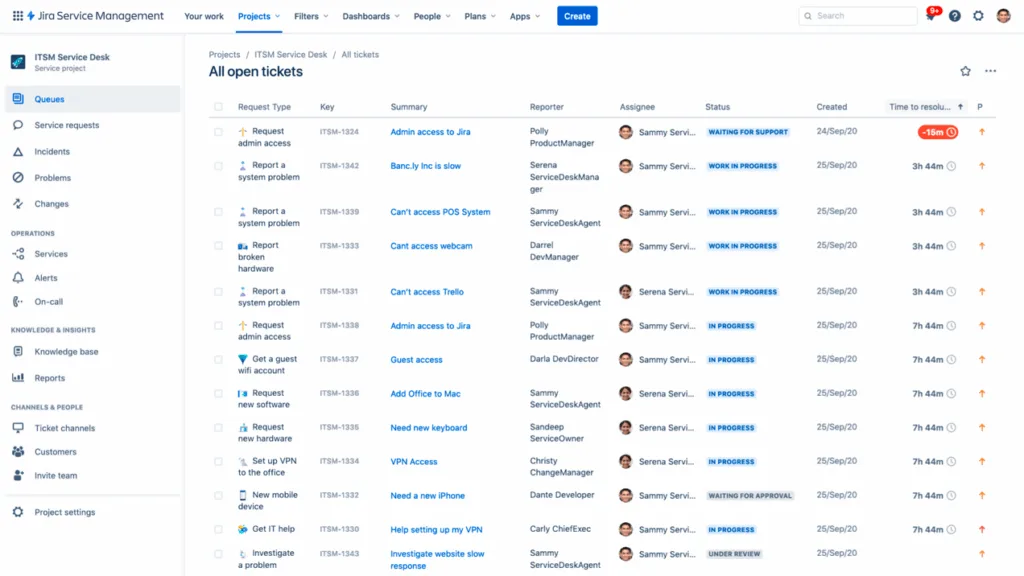
JIRA is an issue management platform that enables teams to manage their status throughout their entire lifecycle easily. This is especially beneficial for the development process, where bugs can be categorized under tags such as features, functional issues, etc.
How support teams can use it:
- Find and store information about bugs and feature requests in one place
- Track, plan, and roadmap new product releases
- Communicate with the engineering team
Why is it helpful:
JIRA helps you bridge the gap between your engineering team and your customers. It also lets you see what your product team is up to, so you know if customer feedback is shaping your product.
Teams can create both public and private projects. Public projects are beneficial as they allow customers to vote for features they love or report any issues that hinder their experience. This way, your team knows which module needs quick attention and on which features their time is best utilised.
3. Trello
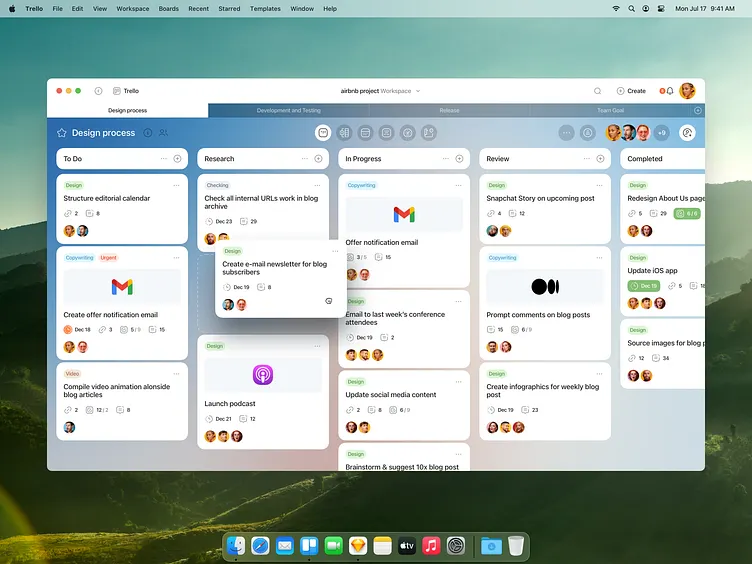
Trello is the free, flexible, and visual way to organize anything with anyone. From creating a clutter-free inbox to helping you manage your own project timelines, Trello is a productivity powerhouse that streamlines your to-do list seamlessly.
How support teams can use it:
- Gauge the progress of projects.
- Gather feedback from team members on projects or ideas
- Compile a task checklist for processes and collect suggestions
- Keep yourself and other team members up-to-date
Why is it helpful:
A Trello board helps you keep track of what different members of your support team are working on. Your entire team can manage their time and organize their work using cards packed with information. Its clean card-like interface also looks catchy on a mobile device, which lets you have all the essential information at just a glance.
It will display the progress of projects and all the metrics for completed goals by individual. It is open and collaborative, allowing anyone on your team to view what other team members are working on at any time.
4. Slack
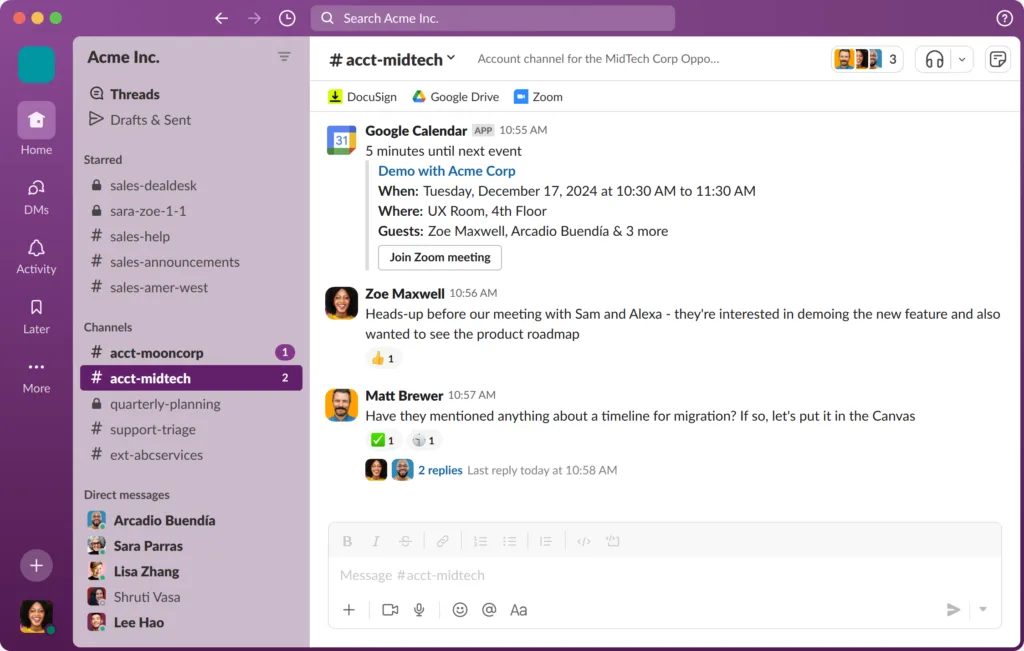 Slack is a chat application that allows you to communicate with your team members. You can chat in open channels with your entire team (and other teams) or discuss things internally using private groups. It also allows you to share your projects and multimedia files with individuals or groups.
Slack is a chat application that allows you to communicate with your team members. You can chat in open channels with your entire team (and other teams) or discuss things internally using private groups. It also allows you to share your projects and multimedia files with individuals or groups.
How support teams can use it:
- Brings together internal communication and collaboration into one place
- Makes communication more direct and transparent across the team
- An alternative to email for communicating with team members
- Breaks down silos
Why is it useful:
Slack is a powerful real-time tool that helps bring your remote teams closer together. It’s beneficial for support teams because it allows them to gain an overview of what’s happening in other areas of the business, such as the strategies marketing is implementing, the sales targets, and the status of new releases from the development team.
5. Dropbox Paper
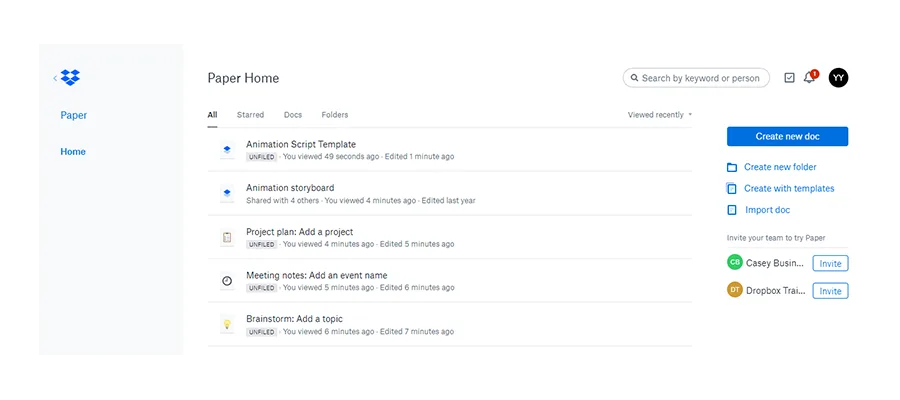
Previously known as Hackpad, Dropbox Paper is a web-based, real-time collaborative text editor that enables multiple users to create, edit, and manage documents simultaneously. It can foster any form of text and media files, making it a comprehensive tool for users.
How support teams can use it:
- Collaborating with team members on different cases or projects
- Sharing documents amongst the team
- Storing information and gathering others’ input
Why is it useful:
Dropbox Paper enables you to share information with your support team in real-time, particularly when you’re in an escalated interaction and need to take notes for a case study.
Support teams handle a high volume of escalated cases, and the tool makes it easy to prepare a document by taking notes in real-time with input from your team members. Once the document is complete, you can share it with the entire team for review, while keeping it available for future reference.
Reporting and training tools
A company’s biggest asset is how well its own functions enable its employees to learn and empower themselves through self-learning and employee empowerment trends.
With organizations heavily investing in microlearning, such as 10-minute modules, there is a 25% to 60% improvement in knowledge retention, which subsequently proves beneficial when handling customer queries.
This is where reporting and training are now an inseparable part of a company’s core workflow. This presents an opportunity to expand the knowledge of all team members while allowing them to strengthen skills that each team member needs to improve. And with the help of reporting tools, you can gauge if your team is on the right track.
6. Google Analytics
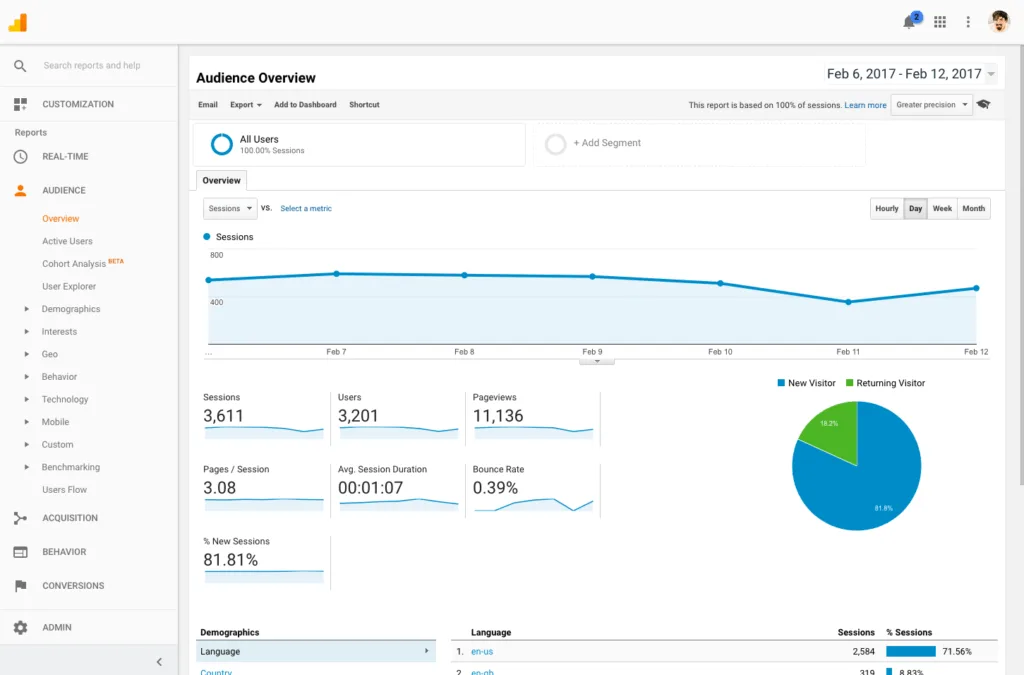
One of the most prominent reporting tools, Google Analytics, provides valuable insights into the traffic on your site. You can use Google Analytics to analyze whether your self-service content is compelling and fulfilling its purpose by determining if it contains the required content that users are seeking, including relevant FAQs, knowledge sections, and more.
How support teams can use it:
- Measure if your FAQs content is helping your customers
- Help your support team determine what exactly your customers are looking for
- Verify the effectiveness of your knowledge base
- Check the most popular section of your site where the most visits are
Why is it useful:
Google Analytics helps you turn customer insights into actions for your business. From a content creation perspective, it is most helpful as you can identify which pages to focus on.
You can also link it with your FAQ section to analyze search queries used by your customers. This will help you move on the right track for self-service content writing.
7. Grovo
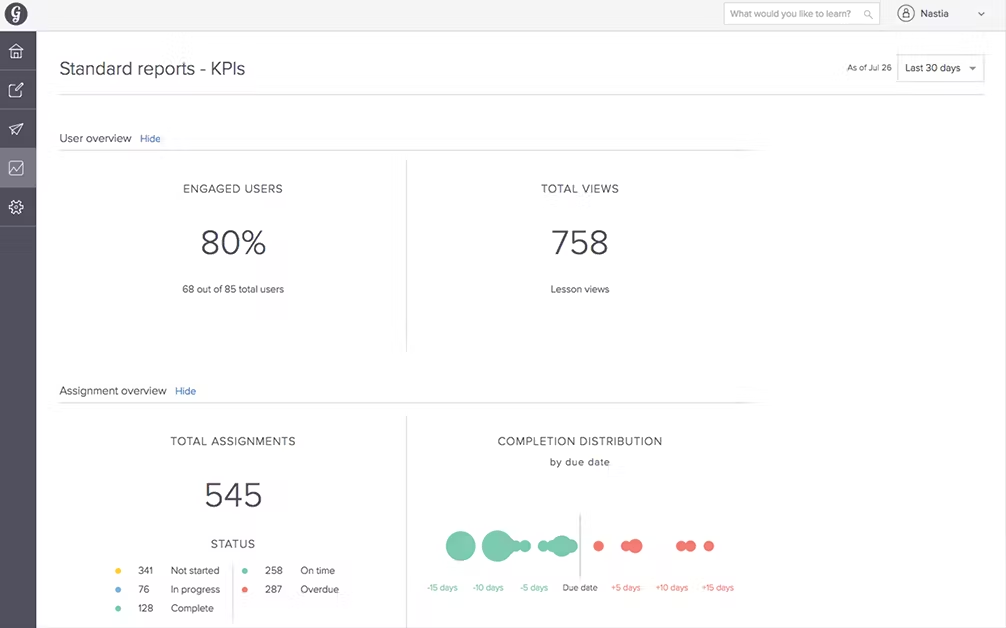
Grovo is a training tool using microlearning processes. It offers short, smartly engineered instructional bursts that are proven to command attention and promote knowledge retention. This is especially fruitful, as employees can enhance their learning as they work, without stressing over dedicated time for an hour-long webinar.
How support teams can use it:
- Onboard your entire team by assigning training, and start tracking their progress
- Managers can ensure all their team members’ training is complete
- Quickly get a high-level overview of your team’s performance
- Reward the best scorers in your team
Why is it useful:
Customer service handles a vast number of queries every day, making it essential for their training to be up-to-date on various topics. Support teams are trained to deliver the best possible customer service, going the extra mile to assist customers by marking new bugs and diagnosing issues.
These days, every organization has remote team workers requiring a complete learning ecosystem, and Grovo is a great platform to train your team, no matter where in the world they are.
A stakeholder can upload their own content for upcoming product releases, test it with your team, and then generate reports to see where everyone stands.
8. Typeform
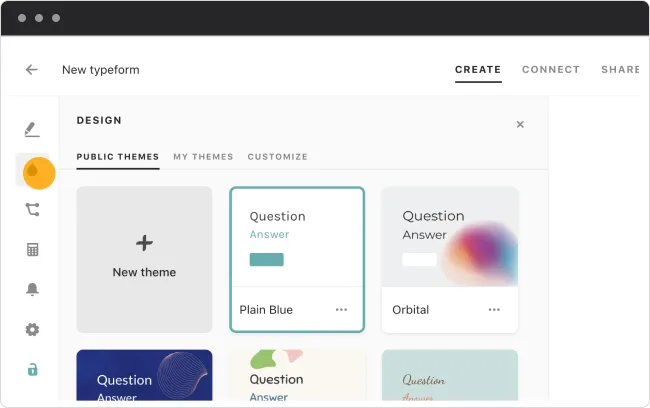
Typeform makes it easy to build and share beautifully designed online forms and surveys. Typeform is helpful for any department to collect feedback, not just support teams. It is also one of the easiest tools to get around with.
How support teams can use it:
- Creating customer surveys to get feedback on your product or your service
- Gathering internal feedback from your team to improve and enhance support processes (Typeform has a 360-degree template perfect for this)
Why is it useful:
The support team’s focus revolves around helping customers and collecting feedback. Typeform just makes their job more effective through surveys (and even quizzing your customers!).
Even your managers can use it for collecting team feedback. It is easily configurable, offering you a variety of built-in templates to use with reports and analytics.
Email and Productivity Tools
While the spotlight is on chatbots and how effectively they have mitigated redundancy in daily operations, recent surveys still show that 83% of users prefer email as their preferred channel for communication.
It’s the primary way you connect with customers, your colleagues, and your team (apart from other collaborative tools, like Slack).
However, when it comes to enhanced productivity, other tools are invaluable in finalizing your daily output.
9. Dropbox
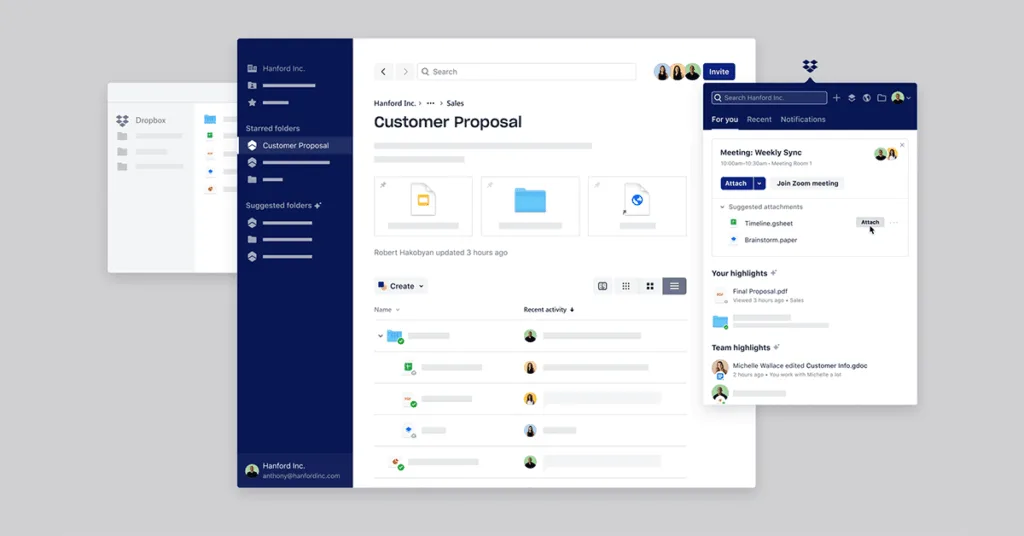
Dropbox is an online cloud storage platform that allows you to save, view, retrieve, and share all your files across different devices and with multiple users.
How support teams can use it:
- Helpful in sharing any type of file with customers, especially those that can’t be sent via email
- Syncs files between your desktop, your colleagues’ desktops, and online storage
- Your customers can also use it to share files or snapshots with you
Why is it useful:
Support teams can create a shared team folder in Dropbox, which keeps the entire team on the same page.
From a customer’s perspective, it can also serve as a hosting solution, for instance, when sharing large files, such as multimedia. A user can simply upload the file to the Dropbox folder and later share the link.
10. Grammarly
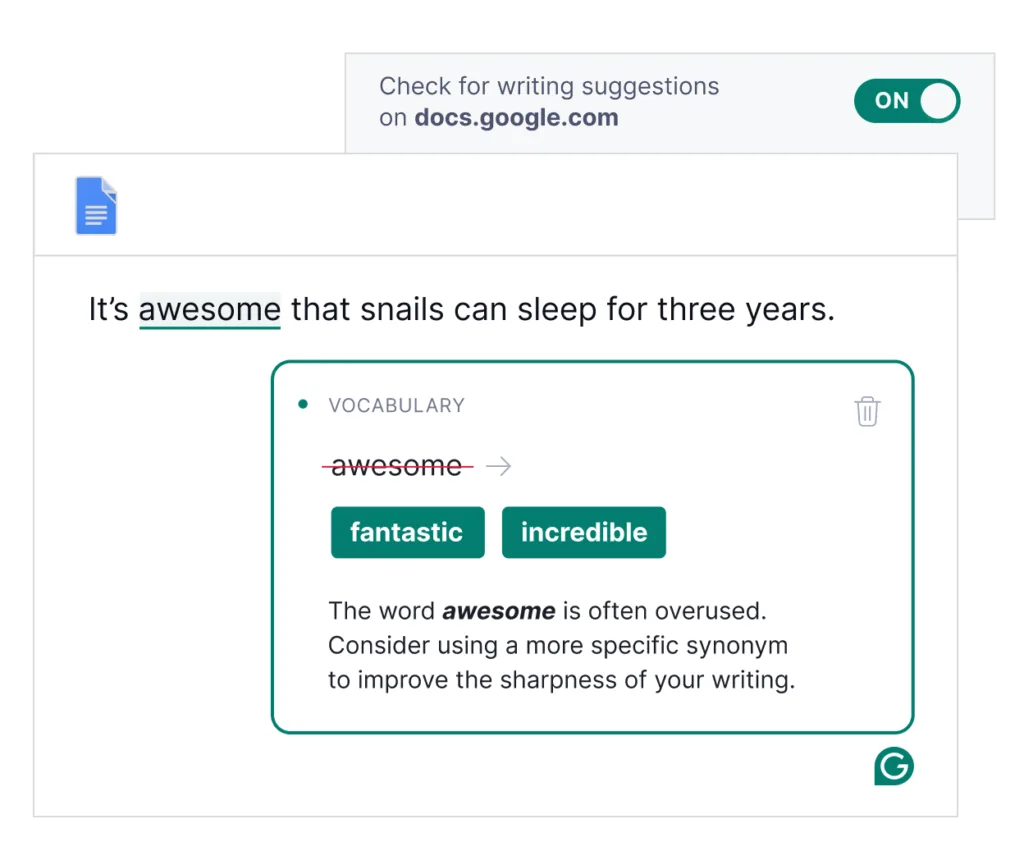
As a tool that enhances your writing by making it more readable and eloquent, Grammarly is an innovative software to ensure correct communication with users. It checks your grammar in emails and documents, correcting any errors by suggesting better alternatives. The tool is available in the form of downloadable software for desktop, mobile devices, and plugins for web browsers.
How support teams can use it:
- Checks the grammar of emails so they are clear and easy to understand
- Detects complicated words or poor sentences, and even offers you an explanation for why it needs to be corrected
Why is it useful:
As a customer service representative, it is crucial to be clear in what you convey to your users. Grammarly does precisely that and allows you to review your emails, spotting mistakes for you. The best part is that it doesn’t just catch the errors but also offers suggestions to fix them.
11. TechSmith Capture
TechSmith Capture allows you to grab an image or create a quick video of anything on your computer screen. It is especially beneficial when one has to highlight the entire process step-by-step.
How support teams can use it:
- Recording demonstration videos
- Taking snapshots and sending them to the customers to demonstrate how to do something
- Making discussions easier by showing snapshots or videos to illustrate a problem or solution
Why is it useful:
Support teams are always looking for ways to assist customers, and it’s much easier and quicker to show someone something in visuals than describe it to them.
12. Hemingway
 Similar to Grammarly, Hemingway App is an editing tool that suggests ways to make your writing bold and clear. From proofreading to a grammar checker, the tool helps you draft the best statements for your customer while sounding positive.
Similar to Grammarly, Hemingway App is an editing tool that suggests ways to make your writing bold and clear. From proofreading to a grammar checker, the tool helps you draft the best statements for your customer while sounding positive.
How support teams can use it:
- Hemingway helps make emails clear and easy to understand
- Highlights your errors to help you write flawless emails
- Gives detailed assistance to help you send better emails
Why is it useful?
Hemingway helps you write clear, concise emails to your customers, presenting your ideas and solutions effectively. Using Hemingway, you can send clean and clear emails to your customers, avoiding passive voice or complicated words.
Diagnostic Tools
Often, there are situations when a customer service representative needs technical assistance while solving a user query. This not only reduces the actual time taken to reduce a problem but also helps the company create a log of technical use cases for the entire team to follow as well.
12. Firefox developer tools
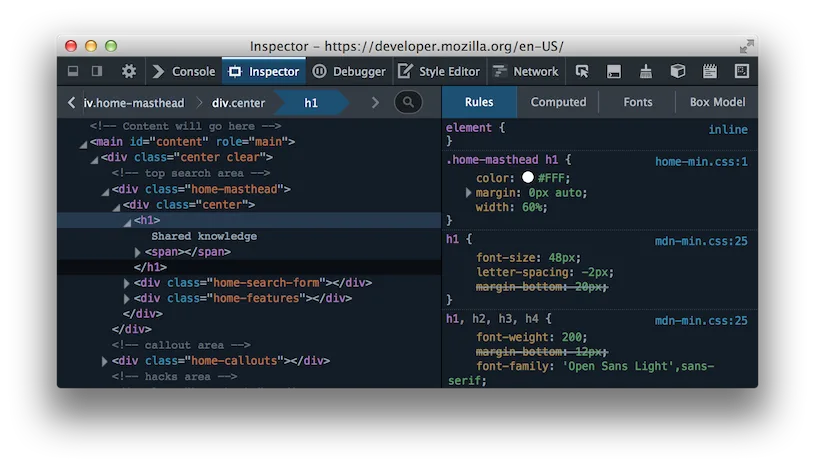
Firefox Developer Tools is a developer tool available in the Firefox browser. With a simple launch process (press F12 to launch), it allows you to debug any kind of error and monitor HTML, CSS, XMLHttpRequests, or JavaScript in real-time.
How support teams can use it:
- Inspect HTML and modify style and layout in real-time
- Uses the most advanced JavaScript debugger available for any browser
- Accurately analyze network usage and performance
Why is it useful:
If a customer reports an error to your support team, the first step is to determine whether the error is client-side or server-side.
The developer tool shows you the exact problem and makes it easy to identify where the issue may be. You can also use Inspect Element to review a specific section of the page, code, or script.
13. EditPlus
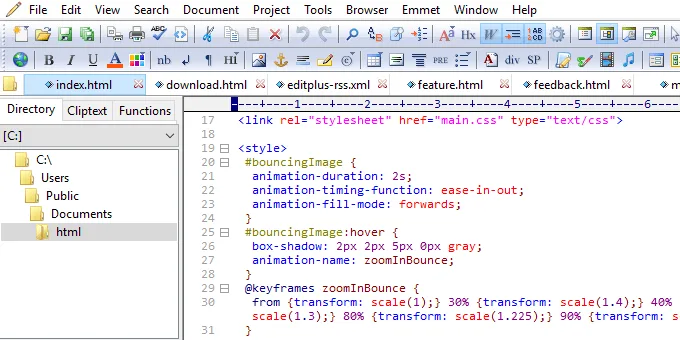
EditPlus is a text editor, HTML editor, PHP editor, Java editor, and Hex Viewer for Windows. It offers many powerful features for web page authors and programmers, helping them customize code and test use cases.
How support teams can use it:
- Helps you quickly write up code in any language
- Provides auto-completion features to fill out functions
- Helpful editor for reading and understanding code
Why is it useful:
For businesses that rely on an advanced tool for code reviews and development, EditPlus is ideal. When your customers need a small script to test functionality, your team can use EditPlus as well.
It provides auto-completion, which makes it easy for support to create new code either for a script or a simple web page. It also uses colour coding to make it easier to read and understand the product code.
14. TeamViewer
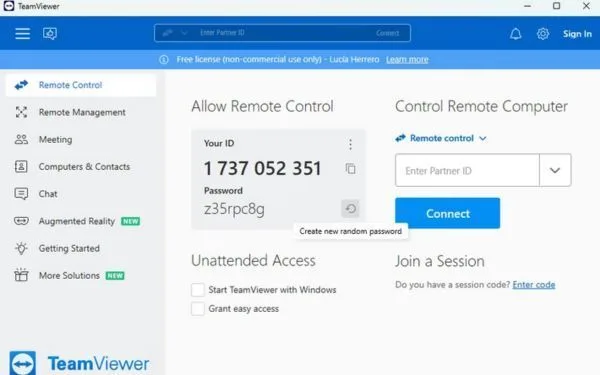
Ever since the pandemic popularized remote work culture, TeamViewer has become an integral part of it. A remote access tool offering desktop sharing, file transfers, web conferencing, and online meetings, TeamViewer has become a significant player in the IT industry, serving 666,000 customers worldwide.
How support teams can use it:
- Support customers by getting access to their screen and remotely rectifying the issue
- Comes with audio and video support
Why is it useful:
Customers sometimes struggle to articulate the exact issue they are facing. It is in such situations that TeamViewer proves particularly useful. By gaining access to your customers’ desktops remotely, you can help them resolve their issues, train them on your product, or set them up directly on their machines without being physically present.
Emerging trends in support tools
With our list, we have been able to cover a wide range of practical aspects of the customer service process. However, in 2025, there have been a few headliners that are single-handedly changing how the entire customer service ecosystem behaves.
- AI-powered Chatbots
Companies have long wondered how to reduce the redundancy in their daily workflow. Thankfully, with the introduction of AI and LLM-based chatbots, organizations have found a new ally for their human agents.
By handling repetitive and general queries, agents have been able to focus on more complex issues that require a human touch, enabling the company to attain unprecedented brand loyalty. This may be why, by 2028, Gartner predicts chatbots as an integral part of the customer service process.
Intercom and Freshdesk AI are some of the notable CRM tools that have incorporated the new tech wave into their revamped workflow.
- Omnichannel Ticketing platforms
The rise of the internet has allowed users to have their pick of digital devices, and to handle such scale, a platform with omnichannel ticket capabilities is needed.
This helps fasten up a more collaborative approach while keeping multiple agents (in case of open queries) on the same page. Kayako and Zendesk are a few platforms that have really eased the workload management incoming from different channels. - Knowledge-base builders
61% of customers prefer self-help tools to rectify issues on their own, which brings us to the necessity of building a solid knowledge base for customers.
From addressing general queries to providing step-by-step product technical details, enterprises need to invest in a tool like Helpjuice, which enables companies to create, organize, and share internal and external knowledge.
Running a successful customer service team is an ongoing process. With shifts in process catalyzed by technology or by the demands of the user, it serves a company to be proactive.
From investing in tools that support better communication techniques to helping your employees upskill on the go by providing them with microlearning and work assistance from a chatbot, a company’s customer service framework needs to be up and running. And these tools help the organizations achieve their objectives big time.
So, review your workflow and see which upgrades are necessary to cut resolution time and improve customer loyalty. Once you figure that out, try the suggested tools for a trial run and observe the difference. You’ll find that your entire process becomes more efficient and responsive, while catalyzing the brand to a crowd-favourite position.
FAQs
- How do I choose the right customer support software for my business?
When finalizing a tool for your customer service process, ensure that it focuses on integration, scalability, AI automation, and analytics capabilities. This enables software to connect with your CRM and ticketing system, ultimately supporting growth and providing real-time reporting. It also helps if your platform supports omnichannel integration, as it provides a unified view for agents, reducing resolution time and retaining customers. - What role does AI play in modern customer support tools?
AI helps in reducing the time consumed in repetitive tasks like responding to FAQs, basic ticket routing, and chat responses to generic queries. They also help businesses excel by providing 24/7 support while allowing human agents to handle more complex issues. AI, if allowed, can analyze historical data to provide predictive analytics that can help a brand plan more effectively ahead. - What tools improve customer service team productivity?
There are many tools available that cater to various business objectives. For instance, for email writing purposes, Grammarly and Hemingway are the best options, while TechSmith Capture is ideal for visual demonstrations. Similarly, Trello for project tracking and Slack for team communication are perfect software that focus on productivity and quality output of the customer service team. - Which customer support tools are best for remote teams?
Remote culture requires tools that enable global teams to stay connected, share knowledge, and support customers seamlessly. This is where TeamViewer for remote desktop access, Slack for real-time collaboration, and Dropbox Paper for document sharing make the daily workload more efficient. For a ticketing management system, platforms like Freshdesk AI do a phenomenal job in keeping agents across the world streamlined.